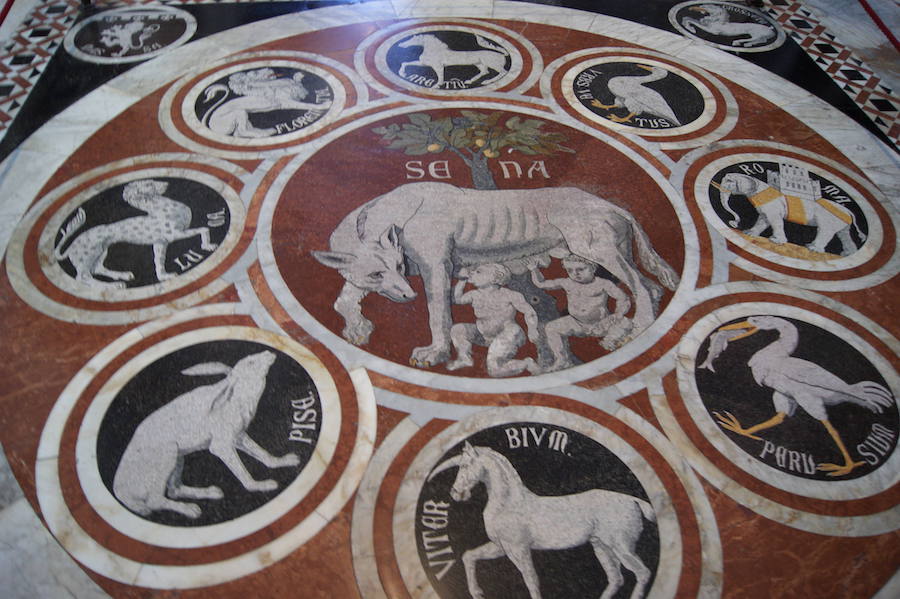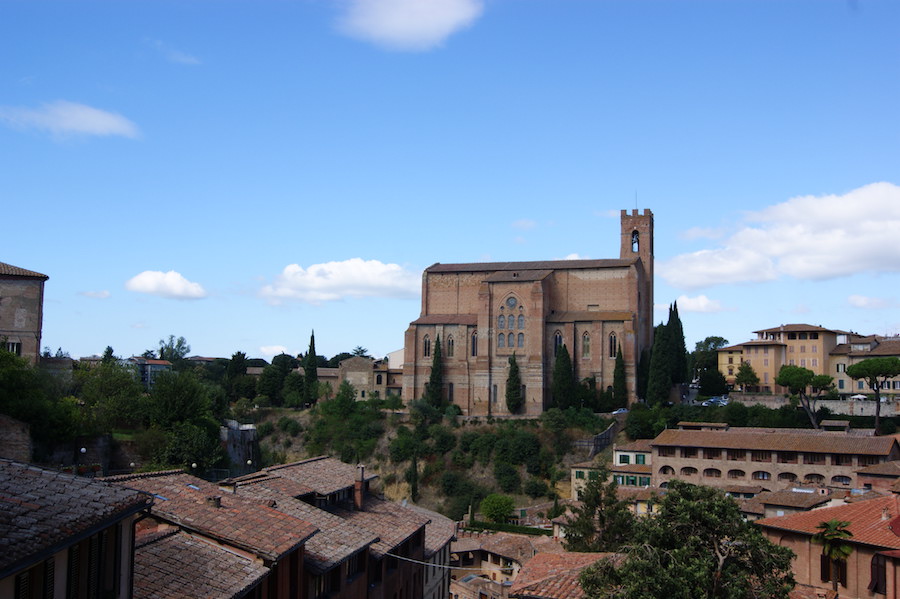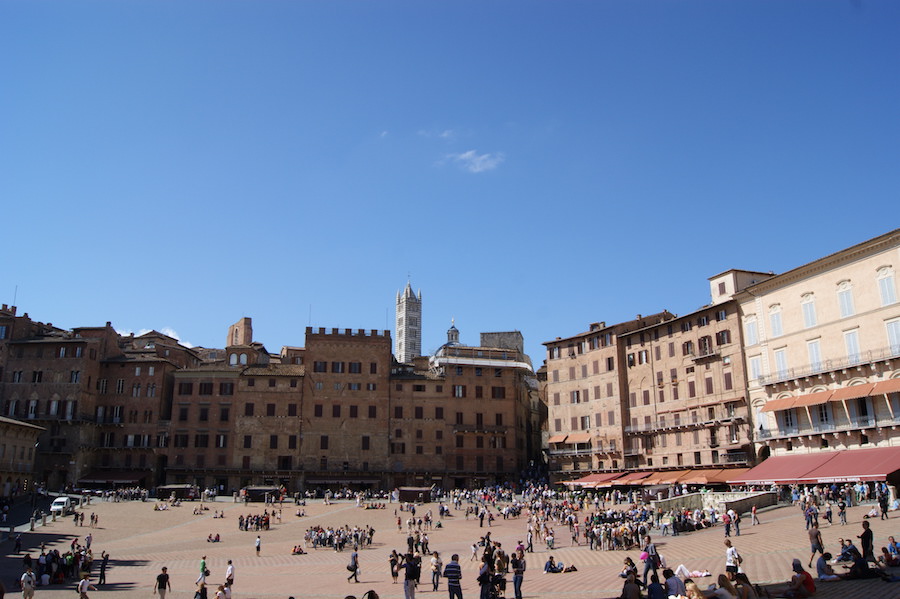Famous for its architecture and the terrifying horse race the Palio on the broad Piazza del Campo, Siena heaves with visitors doing the grand tour of Tuscany.
I was as keen to visit the city as a recent James Bond movie location as for its history. It’s in the otherwise disappointing Quantum of Solace that Bond, in the shapely form of Daniel Craig, gets caught up in a prolonged fist-fight with the Palio as a backdrop. Siena had rarely looked better, at least on film.

With Graham and a group of friends in tow, we arrived on a hot and sunny day along with half the population of Italy, all of us trying to find somewhere to park on the outskirts of the medieval city. Any doubts that we were in one of the region’s tourism jewels were quickly dispelled. This old Etruscan hill town was clearly top of the pops for holidaymakers, who must be both a blessing and a curse for locals.
We knew where we wanted to go – the heart, the Piazza del Campo. We were somehow drawn to it through the narrow, pedestrianised streets, aided by a swarm of humanity heading in the same direction.

Our route took us past some gorgeous Romanesque and Gothic buildings, the piazza’s famous tower occasionally visible as we peered down dark, mysterious alleys. Impressive red-brick buildings dating back centuries lined the streets, many of them home to smart boutiques, trashy souvenir shops and cosy cafes. It all made the walk to the piazza as enjoyable as the arrival.
According to legend, the city was founded by Senio, the son of Remus, one of the two brothers who founded Rome. At the time, and with his brother Aschio, he carried a carving of a she-wolf, which in turn became the symbol of Siena. We saw her everywhere – carved in stone and wood, adorning tacky souvenirs. Centuries later, Siena became an economic and political powerhouse, as well as a centre of learning – its university is now more than 750 years old.

History was evident in buckets in the expansive Piazza del Campo. Striking and sloping, it’s always been the social and political heart of the city. It’s divided into nine sections, to represent the nine members of the city’s historic ruling council. At the heart of that political power is the Palazzo Comunale. Building began on the gothic edifice at the end of the 13th century and today it’s the oldest public building in Italy to have continuously maintained its original function as a town hall.
It was topped off with the magnificent Torre del Mangia – at 102 metres, an engineering miracle at the time of its construction. Sadly, we didn’t make it to the top and the queues were long. We did pass the Fonte Gaia fountain, which draws spring water from the hills around the city into the square. It was built to be at the heart of a number of channels that carried water to the wells of the city’s grand mansions and public buildings, a great engineering achievement.
I could only imagine being in the palazzo on the day of the Palio race, when the atmosphere must be extraordinary. Back in the earliest days of Siena, races were held outside the city walls and winners were presented with a ‘pallium’ – a banner made of the finest material, which went on to give the race its name. It moved to the piazza in the 17th century, with the competition held between 17 teams, or contrade, representing the city’s traditional districts. Their colours adorn the streets, fluttering in the breeze, and are plastered over countless souvenirs.

The square done, we retired for lunch before walking to the Opera della Metropolitana di Siena, at the centre of the city’s religious life, in the Piazza del Duomo. The cathedral dazzled in the summer sun, its facade of white, green and red marble so typical of Tuscany. Beyond were the remains of a 14th century project to turn the cathedral into one of Italy’s biggest churches, an expensive plan that was eventually scotched by the Black Death.
If the exterior of the cathedral made for a spectacular sight, the interior was beyond superlatives. Black and white stonework, blue-painted vaults decorated with gold stars and endless art works generated visual fireworks. But it was the floor that truly took our breath away, boasting a remarkable collection of decorative marble panels. We were lucky to be there in September, one of the few months when the panels are displayed to the public.
We continued our tour, visiting the Complesso Museale Santa Maria della Scalla – a former hospital that now houses an archaeological museum – and the gloriously decorated Pilgrim’s Hall.

But with our day almost done, we didn’t have time for something more gruesome – the preserved head and thumb of St Catherine displayed in the Basilica of San Domenico.
There are limits…

